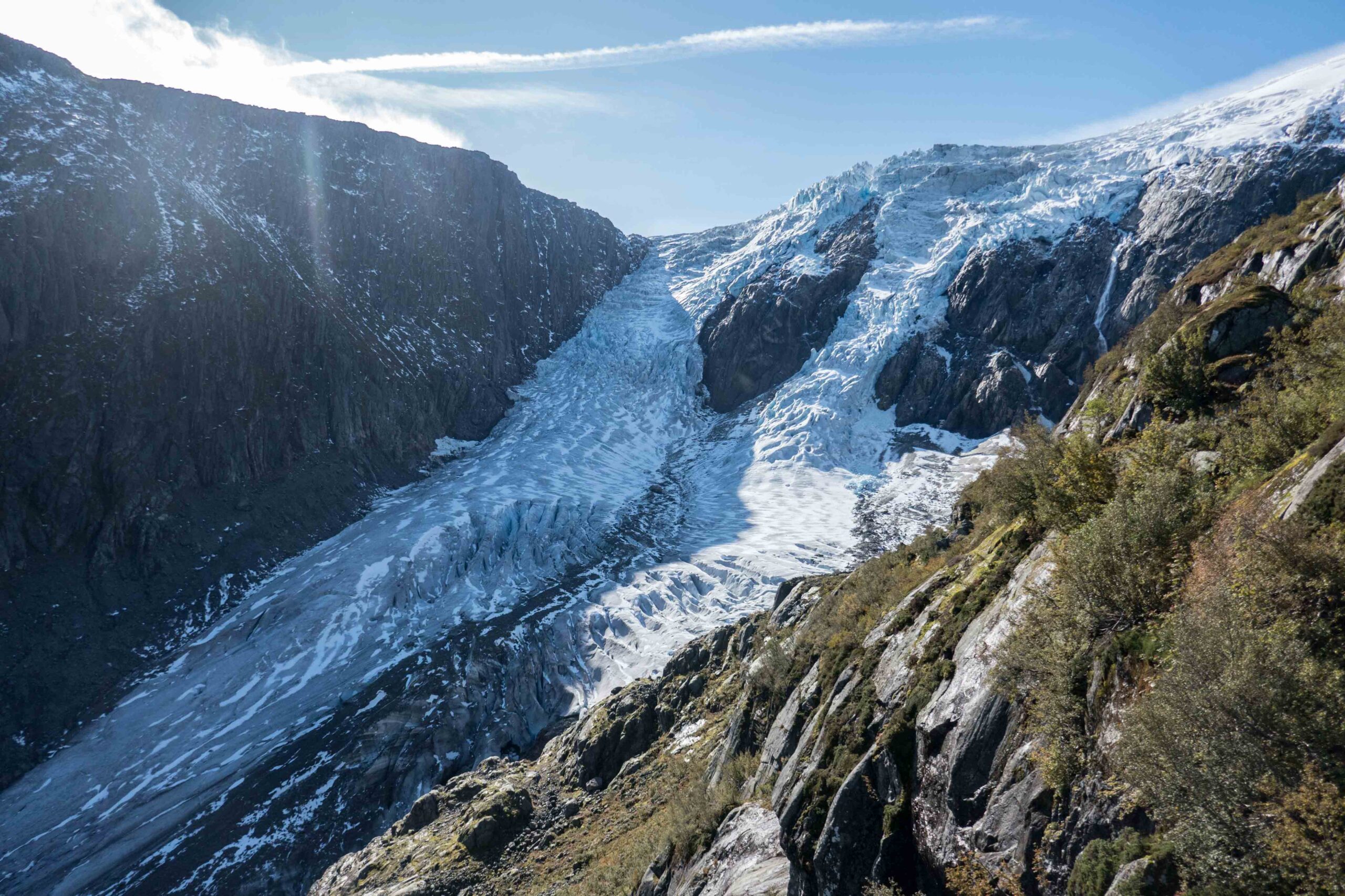Norway is a mountainous country in the arctic region. The climate is relatively mild for its northern latitude, thanks to the country’s position along the North Atlantic Current. This creates perfect conditions for lots of snow. In fact, the west coast is the most percipitous region of Europe. With mountains, snow and cool summers, all ingredients for impressive glaciers in Norway are present.
Discover Norway’s fascinating glaciers, their history and dire future. See how glaciers have shaped the landscape and how climate change changes everything.
According to a very detailed study of the number of glaciers and ice patches in Norway there are a staggering 6736 of them (Andreassen et al., 2022). Together they cover an area of 2300 square kilometers or just under one percent of the land area.
There is no doubt that most glaciers in Norway are going to disappear. Between the 1960’s and the 2010’s glaciers lost ten percent of their area and 15,5 meter of thickness on average, or thirty centimeters per year (Andreassen et al., 2020). In the twenty-first century melt rates accelerated. Because all Norwegian ice caps are sensitive to climate warming due to their relative low elevation and flat tops, an increasing part of their area is losing mass on an annual basis. Thus they are lowered, warming even more. To what extent Norway will lose its glaciers greatly depend on the emission scenario. Virtually all of Norway’s glaciers could be gone by the end of this century at high emission scenario’s (Shannon et al., 2019) and even in a moderate scenario most glaciers will disappear (Nesje, 2023). Only when global temperature rise is kept below 2°C, about one third of glacier mass will remain (Compagno et al., 2020).

Search within glacierchange: